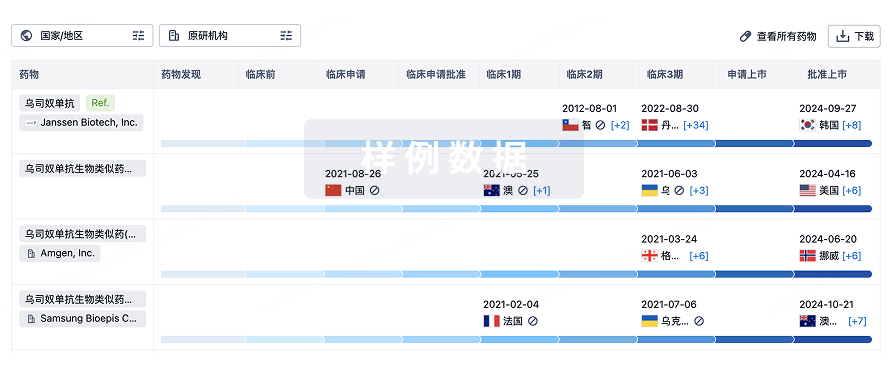预约演示
更新于:2025-10-25
PB-2
更新于:2025-10-25
概要
基本信息
在研机构- |
权益机构- |
最高研发阶段无进展药物发现 |
首次获批日期- |
最高研发阶段(中国)- |
特殊审评- |
关联
100 项与 PB-2 相关的临床结果
登录后查看更多信息
100 项与 PB-2 相关的转化医学
登录后查看更多信息
100 项与 PB-2 相关的专利(医药)
登录后查看更多信息
85
项与 PB-2 相关的文献(医药)2025-11-01·FOOD CHEMISTRY
Enhanced stability and anticancer activity of (−)-epicatechin gallate and procyanidin B2: Synergistic effects of natural deep eutectic solvent-based ovalbumin glycation and non-covalent complexation
Article
作者: Liu, Min ; Yuan, Lixia ; Shi, Ruijie ; Lu, Xiaowei ; Yang, Yiyun ; Chen, Aiju ; Zhao, Yanna ; Zhang, Xuejie ; Qi, Xin
In this study, glycated ovalbumin (GOVA) with a high degree of grafting (90.2 %) was prepared via response surface methodology (RSM) in natural deep eutectic solvents (NADES). The interactions between GOVA and (-)-epicatechin gallate (ECG) or procyanidin B2 (PB2) were compared using fluorescence spectroscopy and molecular docking. Hydrogen bonding and van der Waals forces were identified as the primary interaction forces, with the GOVA + ECG complex exhibiting stronger interaction than GOVA + PB2. The binding altered the particle size, surface hydrophobicity, and secondary structure of GOVA. Moreover, GOVA's encapsulation improved the stability, bioaccessibility, antioxidant activity, and anticancer potential of both ECG and PB2. The anticancer activity of GOVA complexes was correlated with anti-inflammatory and apoptosis-inducing effects through Western blot analysis and flow cytometry. This study highlights the promising potential of GOVA, ECG, and PB2 for innovative applications in the food and pharmaceutical fields.
2025-10-01·THERIOGENOLOGY
Procyanidin B2 improves the in vitro maturation of porcine oocytes and subsequent embryonic development
Article
作者: Jia, Ruru ; Wang, Yanxin ; Zhou, Dongping ; Xia, Fan ; Chen, Yanyu ; Shi, Deshun ; Wang, Yun ; Lu, Canqiang ; Liang, Shiying ; Lu, Fenghua ; Huang, Xiaoqian
Lipogenic and catabolic processes constitute fundamental metabolic pathways that govern energy homeostasis during oocyte maturation and subsequent embryonic development. Although emerging evidence has highlighted the regulatory potential of Procyanidin B2 (PB2) in modulating meiotic progression and developmental competence of mammalian oocytes, the underlying mechanisms remain elusive, particularly in porcine oocytes. The present study was designed to systematically evaluate the therapeutic potential of PB2 in porcine oocyte in vitro maturation (IVM) and delineate its underlying mechanisms. Our findings reveal that supplementation with 5 μg/mL PB2 during IVM significantly improves meiotic competence, as evidenced by enhanced polar body extrusion rates, while concurrently boosting the developmental capacity of subsequent parthenogenetic embryos. PB2 reduced the incorrect distribution of cortical granules and improved the cytoplasmic maturation rate of the oocytes. Further analysis revealed that this treatment significantly enhanced the efficiency of lipid catabolism and fatty acid β-oxidation, increased the mitochondrial content and ATP levels, while reducing intra-oocyte ROS production. Notably, PB2 supplementation significantly increased the phosphorylation of AMP-activated protein kinase (AMPK); the inhibition of AMPK activity (Compound C, AMPK inhibitor) suppressed the ability of PB2 to promote lipid metabolism and increase mitochondrial content in oocytes. Besides, inhibition of AMPK lowered the oocyte maturation rate and the subsequent zygote cleavage and blastocyst formation rate when compared to that of the PB2 treatment. These results suggest that PB2 can promote lipid catabolism by activating AMPK, thereby enhancing the developmental potential of porcine oocytes.
2025-09-01·KOREAN JOURNAL OF PHYSIOLOGY & PHARMACOLOGY
Procyanidin B2-induced LKB1-AMPK activation mitigates vascular smooth muscle cell proliferation through inhibition of mTOR signaling
Article
作者: Sung, Jin Young ; Kim, Seul Gi ; Choi, Hyoung Chul ; Park, Hee Young ; Bae, Gyeong Ju
Vascular smooth muscle cell (VSMC) proliferation contributes to intimal thickening in atherosclerosis and restenosis diseases. As a proanthocyanidin type B, procyanidin B2 (PB2) is abundantly found in cocoa, apples, and grapes and is reported to have vascular protective effects. However, the mechanisms by which PB2 inhibits proliferation of VSMCs are not clearly understood. Therefore, the purpose of this study was to investigate the underlying mechanism of PB2-induced inhibition of cell proliferation in VSMCs. We found that PB2 dose- and time-dependently increased phosphorylation of liver kinase B1 (LKB1) and AMP-activated protein kinase (AMPK) in VSMCs. AMPK is a serine-threonine kinase and serves as a key sensor of cellular energy. PB2 induced LKB1 translocation from nucleus to cytosol which led to AMPK activation. In addition, PB2-induced AMPK activation decreased cell proliferation and cell cycle progression by inhibiting mammalian target of rapamycin signaling pathway. Transfection with LKB1 or AMPK siRNA and transduction of dominant-negative isoforms of the α1 and α2 subunits of AMPK eliminated anti-proliferative effects of PB2. These results demonstrate that PB2 might be a preventive agent for cardiovascular disorders such as atherosclerosis and hypertension.
100 项与 PB-2 相关的药物交易
登录后查看更多信息
研发状态
10 条进展最快的记录, 后查看更多信息
登录
| 适应症 | 最高研发状态 | 国家/地区 | 公司 | 日期 |
|---|---|---|---|---|
| 肿瘤 | 药物发现 | 美国 | - |
登录后查看更多信息
临床结果
临床结果
适应症
分期
评价
查看全部结果
| 研究 | 分期 | 人群特征 | 评价人数 | 分组 | 结果 | 评价 | 发布日期 |
|---|
No Data | |||||||
登录后查看更多信息
转化医学
使用我们的转化医学数据加速您的研究。
登录
或

药物交易
使用我们的药物交易数据加速您的研究。
登录
或

核心专利
使用我们的核心专利数据促进您的研究。
登录
或

临床分析
紧跟全球注册中心的最新临床试验。
登录
或

批准
利用最新的监管批准信息加速您的研究。
登录
或

生物类似药
生物类似药在不同国家/地区的竞争态势。请注意临床1/2期并入临床2期,临床2/3期并入临床3期
登录
或

特殊审评
只需点击几下即可了解关键药物信息。
登录
或

Eureka LS:
全新生物医药AI Agent 覆盖科研全链路,让突破性发现快人一步
立即开始免费试用!
智慧芽新药情报库是智慧芽专为生命科学人士构建的基于AI的创新药情报平台,助您全方位提升您的研发与决策效率。
立即开始数据试用!
智慧芽新药库数据也通过智慧芽数据服务平台,以API或者数据包形式对外开放,助您更加充分利用智慧芽新药情报信息。
生物序列数据库
生物药研发创新
免费使用
化学结构数据库
小分子化药研发创新
免费使用